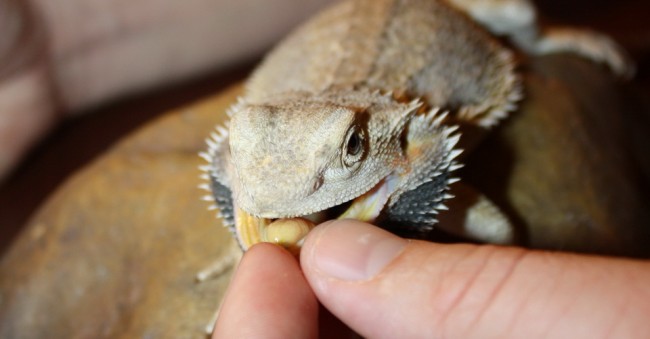and Dubai International Airport
and Dubai International Airport

Well, maybe not "tame" exactly - you see, it's the bearded dragon we're talking about and they're a bit smaller than in the movie. But "taming" sounds cool and let's not beat around the bush - most bearded dragon wanna-be-owners have a hefty dose of the cool factor. And there is a lot to love about a bearded dragon; just looking at one takes you back to the era of knights and castles and damsels in distress... or maybe just to the days you spent playing Dungeons and Dragons at university . Either way, beardies are cool, and here are some things worth knowing before you embark on a hero's journey with your magical beardie by your side.
The Background
Pogona is a genus of eight different reptile species, known to us commoners as bearded dragons. Not difficult to guess where the "beard" part comes from - they've got skin around their throats (called a gular pouch) that expands to look like a beard if they're challenged or excited. Pretty nifty, eh? Originating from the land down-under, Australia, they're now found all over the world. They grow up to two feet long (61cm), live for up to 6-10 years (or even longer sometimes!) and are popular - they are the number one most kept pet lizard in the world.
The Dragon Cave
We recommend setting up beardie's terrarium before bringing him home so he can immediately luxuriate in the beautiful "dragon cave" you've created. Okay, not much decor needed, true, as bearded dragons are at home in a desert-like landscape, but getting the sizeand temperature of that terrarium correct is key because, as you know, they are reptiles (i.e. cold blooded).
Food and Beverage
We've written a tasty little article right here, on What to Feed Your Bearded Dragon. So why the hell should we repeat ourselves here?!! Geeeezzzz... what's the matter with you, eh? Expect all the information in one place?! Geeezzzz... (Hugs and kisses, of course.)
Love and Hygiene
Do love and hygiene go hand-in-hand? We're not certain. But clean out beardie's dragon-cave regularly and he's sure to love you (more). Clean his tank (as well as water and food bowls) thoroughly once a week - you can use a 1:10 solution of bleach and water in a spray bottle, which should do the trick.
Beardie himself also needs a delicious aquatic bathing experience once a week, helping to keep him hydrated and assisting with his shedding, if that's what he's up to at the moment. Just wash him gently in lukewarm water. Also invest in a small mist bottle and give beadie a gentle squirt or two a couple of times a day - this helps skin stay moist and hydrated.
Shedding
Did someone say shedding? Yes, but for beardies it's not terribly dramatic, especially if you're doing the bathing and misting thing. As your dragon grows he will shed his skin, more often as a baby when growth is rapid. There are no hard and fast shedding rules. Keep a close eye on beardie for loss of appetite and colour changes (darkening or dulling); these are signs that shedding could be in progress. To help your little phoenix while he's shedding, give him more loving attention with the mist-spray bottle but don't try and remove the skin yourself - it will all happen in good time.
Lucky In Love
Bearded dragons are quick, curious and usually charmingly affectionate (or rather, charming at receiving affection) if well-socialised. Handle/play/stroke/etc. your beardie at least once a day. Regular touching and excursions outside of the "cave" keep him engaged and it's good (for both of you) to entertain beardie outside his enclosed habitat - but take him out of his enclosure only for short periods of time (up to an hour) as his temperature needs are always paramount.
In Sickness and in Health
Sometimes knowing if your beloved beardie is okay can be tricky, what with shedding and (yes there's more) brumation. This is a hibernation cycle that your dragon may go through during autumn or winter when he responds to changes in temperature or light. Beardie might nap a lot more or sleep for longer, or do nothing different at all. Confused? Don't be! Being aware and sensitive is the key to keeping tabs on these cycles.
Beardies are generally healthy creatures, but sensitive too. When problems do arise they tend to be from dehydration, malnutrition, mites and parasites and dragon-specific diseases. Signs to watch for are a dragon off his food, abnormal pooping, lethargy and changes in personality. If you have any misgivings about your beardie's health, take him in to the experts for a check-up - mini-dragons (and the maxi ones too) are always very welcome in the Vet Kingdom.
Your Mission
So, now hopefully you're a little more set for your epic hero's journey with your fearless beardie bravely by your side (warm and well-fed) - just grab that suit of armour and find someone to rescue (no, not your other pets - beardie won't be a threat to them at all!) and you're good to go!
Office Coordinators -cum- Receptionists
Animal Relocations Officers

